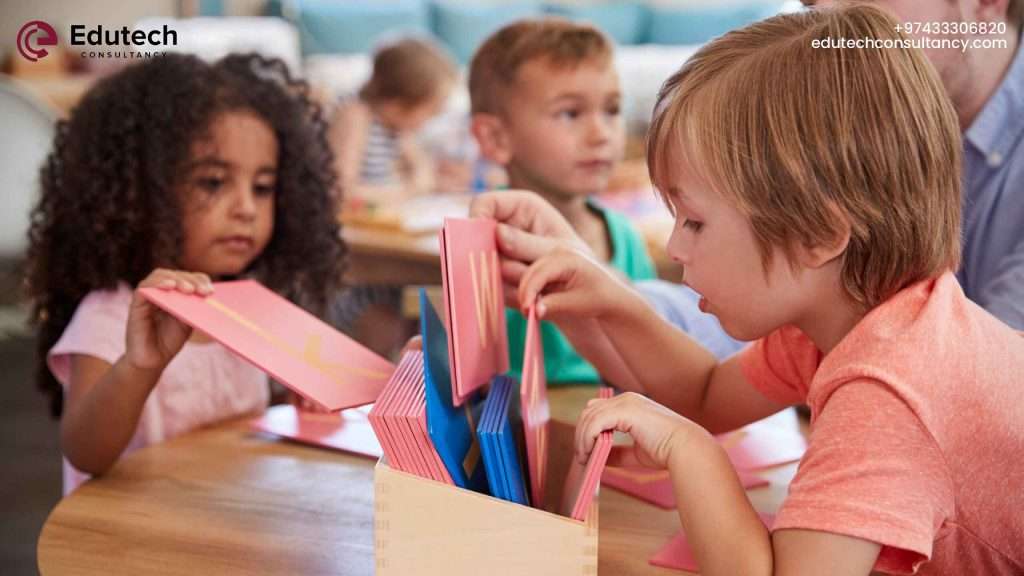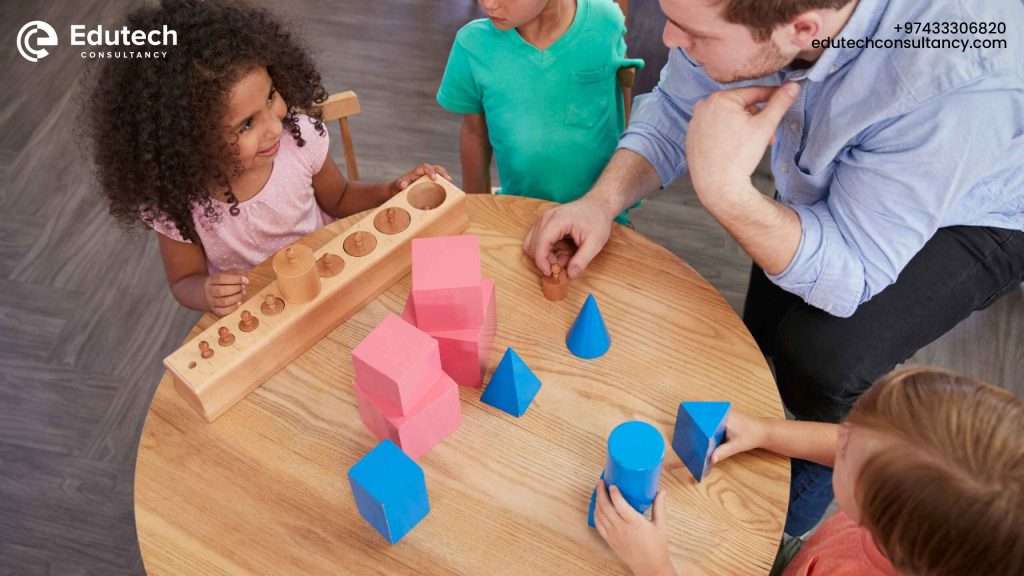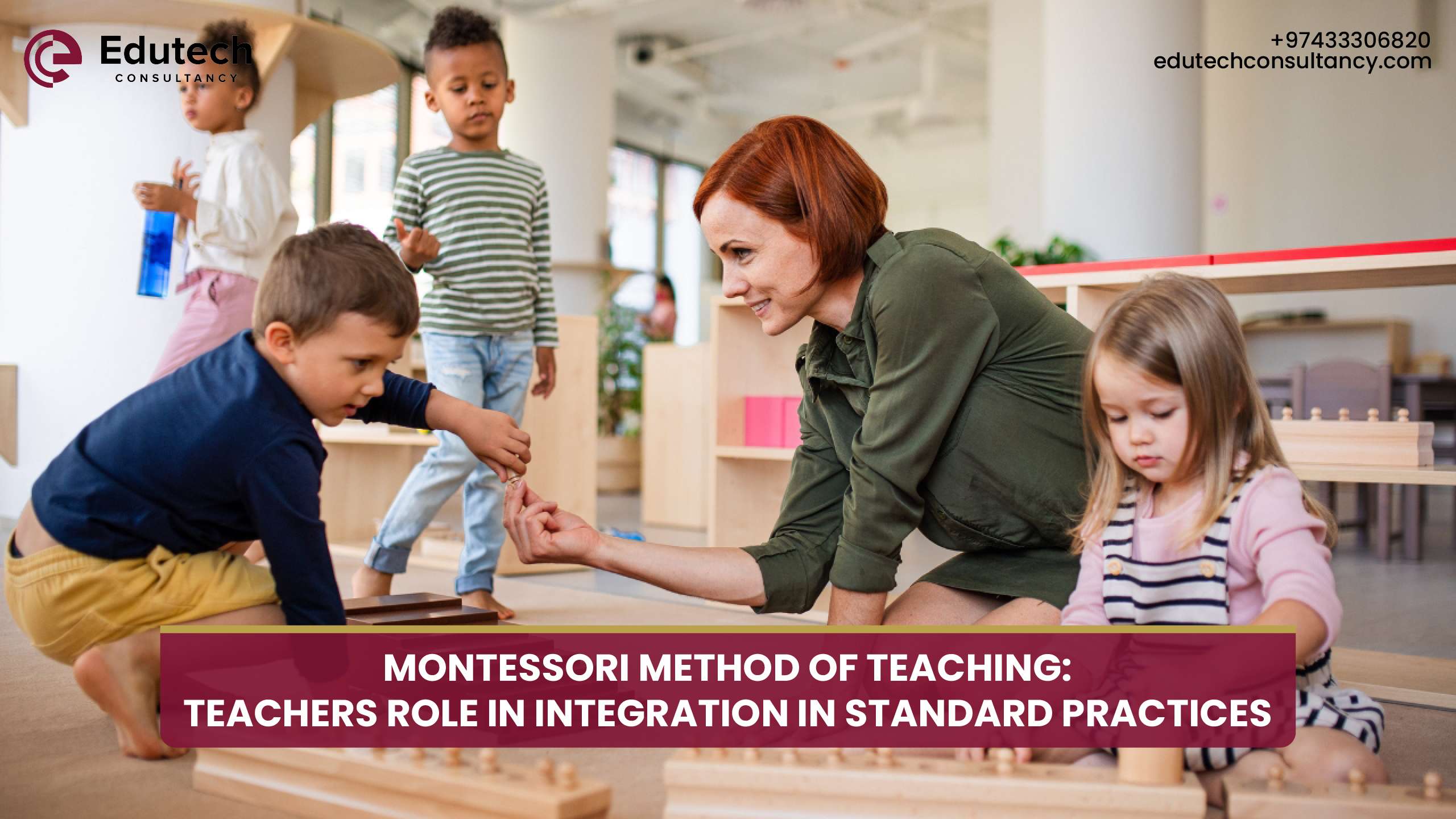Introduction
Gone are the days when teaching included just one method of delivering knowledge. With the advent of multiple teaching ways, teachers are now well-equipped with innovative practices to enhance their students’ learning experiences. Also, with evolving approaches every day, the Montessori method of teaching is a child-centered, hands-on approach providing a promising avenue for learning in early education.
Although the Montessori Method is time-tested, it complements traditional education methods. Integrating the Montessori Method into a standard curriculum moreover offers educators a unique way to promote independence in children. But how can teachers play their role in combining these two methods effectively?
Today, our blog will explore how teachers can integrate the Montessori method of teaching into the standard curriculum.
Core Principles of the Montessori Method of Teaching
Before stating what can be done, it is essential to understand the foundation of core principles of the Montessori Method.

1. Practical Life Skills:
Focuses on nurturing independence and self-care through pouring, buttoning clothes, and sweeping.
2. Sensory Development:
Includes activities that enhance sensory perception and discrimination. Includes activities that use the senses of sight, touch, hear, taste, and smell.
3. Language Development:
Enhances language skills. The activities include storytelling, Phonics teaching, reading, and writing.
4. Mathematics:
Introduces math concepts with hands-on practice materials.
5. Cultural Studies:
Includes the elements of history, science, and geography. This principle allows children to learn and gain knowledge about the world around them.
Incorporate Montessori Techniques into your Teaching Style
The Montessori Method of education will help give a successful makeover to your classrooms. While the 100% Montessori setup can give your students and you an expanded learning opportunity. Additionally, the modified approach to pick and implement the model will be an excellent way to adapt your methodology to teaching and learning.
1. Prepare the Environment in the Classroom:
A Montessori-inspired environment means a purely child-centered classroom design. The objective here is basically to keep the space organized. Therefore, having open shelves and a neat, prepared space is all it requires to promote focus and independence. Additionally, sufficient soft lighting and calming colors will work like a cherry on top.
Example:
Place activity materials in baskets on low shelves so children can easily pick the required material.
2. Add Montessori Materials:
When utilized in best practice, Montessori materials promote hands-on learning for children. What can be done for the traditional setup, then? So adding up these materials from the Montessori Method of teaching, like tools for daily activities, can be incorporated into daily learning. Also look for ways how and where you can integrate items like sensory materials, counting beads or other related tasks to make lessons more interactive.
Example:
Use sandpaper letters to teach phonics, helping students trace and feel each letter as they learn its sound.
3. Encourage Independence:
One of the hallmarks of Montessori is encouraging students to become self-sufficient learners. Hence, giving children the opportunity to make choices and manage their tasks independently, nurtures responsibility and confidence. Also, allow students to complete tasks with minimal teacher intervention.
Example:
Create a task or activity board where students can choose what they can complete for the day in a designated order.
4. Address Multiple Learning Styles:
Each child in the Classroom has a different capacity to learn. Montessori Method of teaching explicitly emphasizes the importance of addressing different learning styles. As a result, adding a mix of auditory, visual, and kinesthetic learning will be an excellent option to accommodate all students. However, students can process the information independently with experiential learning ranging from sensory, auditory, or kinesthetic learning methods.
Example:
Some students might benefit from experimenting with sensory materials like soil or water during a science lesson. While others might need or prefer reading or drawing to augment their understanding.
5. Arrange Various Activity Stations:
One of the vital aspects of the Montessori Method is self-directed learning. Individual activity stations also enable a focused zone for students’ interests. Furthermore, teachers can arrange and specify separate learning zones for different subjects. This way, students roam freely between activities based on their needs and interests.
Example:
Set up a language station with storytelling materials. Props and letter-building activities can be placed. This allows students to engage and explore a hands-on literacy venture.
6. Don’t Make the Walls a Limit:
Montessori highlights the significance of learning beyond the classroom walls. Teachers must always encourage students to interact with their surroundings. Outdoor activities are one such option. It is beneficial because outdoor activities allow students to explore nature. Additionally, it also develops their cognitive and motor skills. Indoor spaces should also be designed for movement and discovery.
Example:
Take students for a nature visit outside in the garden. There, students can collect leaves and categorize them by shape or color. Thus, blending science and sensory learning as part of an outdoor activity.
7. Let Students Collaborate and Cooperate:
Collaboration helps students build social skills. It deepens their understanding of the concept as they practice in a group study or project. Cooperative and collective learning also allows them to understand the concept of shared responsibility in the classroom.
Example:
Teachers can make students work in pairs. Furthermore, ask them to perform a peer teaching exercise where they explain math problems to each other. This reinforces their conceptual understanding with collaboration.
Montessori Method of Teaching in Traditional Classrooms: The Balanced Practice
Blending the Montessori Method of teaching with traditional methods gives educators a broader facility. This serves many purposes. Firstly, it allows teachers to enrich the learning environment. Secondly, hands-on learning provides students with an experience they retain. Thirdly, these approaches are not overwhelming. Having said that, we can easily infer that the combined teaching practice gives students more autonomy. Along with that, it also enables them to develop critical life skills and achieve better academically.

At a glance, blending Montessori with standard teaching practice opens up unlimited and fresh avenues of learning for students. It allows them to learn deeper. It provides a richer educational experience for young learners, making them successful.
So, if you want to discover how this revolutionary approach can enhance your classroom success, we invite you to join the upcoming workshop by Edutech Consultancy, integrating Montessori in Classrooms.
Click here and enroll for this workshop which will provide you practical tips and methods to integrate the Montessori Method in Classrooms effectively.
FAQs
What is the Montessori Method of teaching?
The Montessori Method of teaching is a child-centered educational approach developed by Dr. Maria Montessori. It promotes independence, hands-on learning, and respect for the child’s natural development. This method also provokes children’s curiosity, creativity, and a love of learning.
Is integrating Montessori techniques into traditional curriculum a good practice?
Absolutely! Integrating Montessori techniques into traditional teaching practice is a great practice. Teachers can create a more interactive and engaging learning atmosphere for students.
How do we maintain balance while integrating Montessori techniques with traditional teaching?
The key to balancing Montessori techniques with traditional curriculum standards is finding ways to align them. Always look for ways to use Montessori materials and activities to support particular curriculum objectives.


